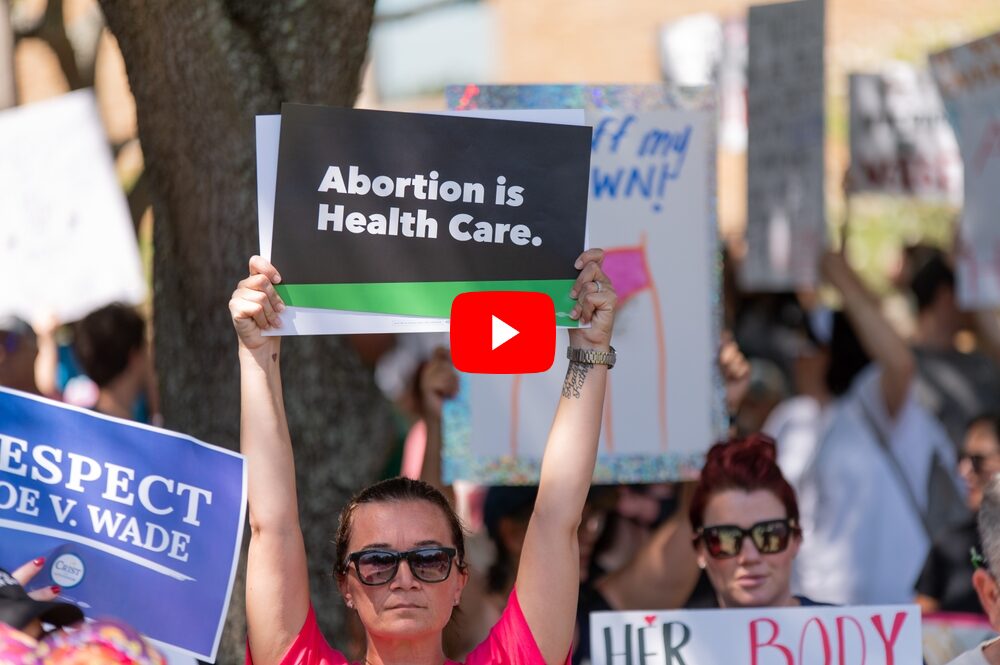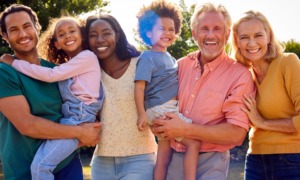Adolescence and young adulthood is a time of identity formation, when young people figure out who they are and who they want to be. One of the ways they do this is by considering the world around them, paying attention to social issues and starting to understand their society and their place in it. Laws and policies signal to young people what society thinks of their value, their role in society and their opportunities for the future.
But the experience of growing up in the post-Roe v. Wade era looks very different from that before the 50-year precedent was overturned in 2022.
Following the Dobbs v. Jackson Supreme Court decision, more than half of U.S. adolescents, ages 13-19, now live in a state with severely restricted or no legal abortion access. As a result, today’s young people are coming of age in what one expert in health law and bioethics has termed an “era of rights retractions.”
I am a developmental psychologist and population health scientist who studies adolescent development and sexual and reproductive health, and it is clear to me from a variety of indicators that, following Dobbs, the experience of adolescence and young adulthood in America has fundamentally changed.
Abortion bans are not only affecting those who need an abortion – they are shaping an entire generation.
How young people view the Dobbs decision
In 2022, my colleagues and I conducted a national survey of young people between the ages of 14 to 24, beginning shortly after the leak of the Supreme Court’s opinion in the case.
We asked them about their knowledge of the Dobbs decision, how they felt about it and how they believed it was impacting the lives of young people in their state. Our research showed that the majority of young people are aware of and alarmed by the Dobbs decision and its implications.
[Related: Morning-after pill vending machines gain popularity on college campuses post-Roe]
Our own research and other emerging data make it clear that abortion restrictions not only affect young people who become pregnant or seek an abortion. These restrictions are affecting how young people think about voting, where they should choose to live, study and work, and how to control their fertility. Abortion restrictions may also have serious impacts on young people’s mental health.
More than 70% of young people said that states’ reproductive rights laws were affecting where they would choose to go to college.
Implications for voting
Some 8 million young people are becoming newly eligible to vote in 2024. Research shows that young people are the most likely to support abortion rights.
Abortion is a top issue that is currently motivating young voters. Change Research found in its recent national poll that 3 in 4 young voters believe abortion should be legal in all or most cases.
More than half of young voters say they will not vote for a candidate whose position on abortion is different from theirs.
In the 2022 midterm elections, young people reported that abortion was the top issue influencing their vote.
How these young people vote may shape the 2024 election at both the national and state level in important ways. Their votes could serve as a referendum on reproductive rights directly in states where the issue is on the ballot and indirectly by shaping who young people want to represent them.
Where to attend college, live and work post-Roe
High school seniors are considering abortion access when deciding where to go to college. Over 70% reported considering reproductive health care access in their college decision.
[Related: Day care, baby supplies, counseling: Inside a school for pregnant and parenting teens]
Abortion access also matters to those entering the workforce. In a recent national survey, two-thirds of young workers reported that they did not wish to live in a state with abortion bans.
Another survey found that 60% of young women are more motivated to move to another state now that their state has passed a ban on abortion, or would be if their state did pass a ban.
Managing fertility
Following Dobbs, young people’s access to contraceptive services is changing too.
In Texas in March 2024, an appeals court ruled that the state could outlaw providing contraception to minors without parental consent at Title X clinics, which receive federal funding to provide confidential contraception regardless of age, income or immigration status. This ruling removed the only confidential access to contraception available to teens in that state.
[Related: For foster youth, new restrictions make abortion access even more difficult]
Recent research that my colleagues conducted with college students in several U.S. Southeast states shows that they are worried that more legal restrictions on contraception are coming. In our study, one young person reported: “I fear that these changes are only a precursor to more strict laws regarding contraception and health care. I fear for the rights and bodies of those like me and those who are less fortunate.”
Some young people have already taken permanent action to avoid pregnancy.
Nationally, there have been significant increases in the number of young people who are choosing to undergo permanent sterilization, either vasectomy or tubal ligation.
The effects are largest for tubal ligation. The rate of tubal ligation was rising prior to Dobbs, but immediately following Dobbs, one large national study found that the rate jumped by about 20% and has continued to rise at nearly twice its pre-Dobbs pace.
These increases signal that some young people simply do not want to take the chance of becoming pregnant or impregnating someone when comprehensive reproductive health care is not available or is under threat.
Effects on mental health
Emerging data shows that mental health outcomes are worse in states with abortion bans.
For instance, a recent large, national study examined changes in mental health symptoms in the months before and after the Dobbs decision, comparing people living in states with trigger abortion bans versus those living in states without trigger bans. A trigger ban was a law designed to be “triggered”, or take effect, as soon as the legal precedent set by Roe v. Wade no longer applied.
The study found that women (but not men) ages 18 to 45 living in states with trigger bans showed greater increases in symptoms of anxiety and depression after the Dobbs abortion decision was announced, compared with women living in states without such bans.
Unfortunately, the study did not include young people under age 18, nor did it look separately at young adults, who have most of their childbearing years ahead of them, to determine how they were being affected. Excluding young people from research and lumping them in with middle-aged adults is a common occurrence in studies focusing on abortion access and its consequences, a problematic practice highlighted by a recent expert consensus report.
Scholars predict that mental health consequences of reproductive health care restrictions will be more severe for historically marginalized populations. I expect this will include young people.
Our initial research indicates that many young people are experiencing significant stress and worry as a result of changing access to abortion. When describing her feelings about the decision, one young woman said,
“I feel so many things. Anger, sadness, outrage. It makes me scared for my own future and for other women.”
***![]()
Julie Maslowsky is an associate professor of health behavior and biological sciences at University of Michigan. Maslowsky is a developmental psychologist and population health scientist who studies adolescent health, with a focus on sexual and reproductive health including contraception and abortion. Her research integrates adolescent developmental science with population and reproductive health to inform developmentally appropriate policies and practices on adolescent sexual and reproductive health.
This article is republished from The Conversation under a Creative Commons license. Read the original article.
Disclosure statement: Julie Maslowsky receives funding from the National Institutes of Health.




























